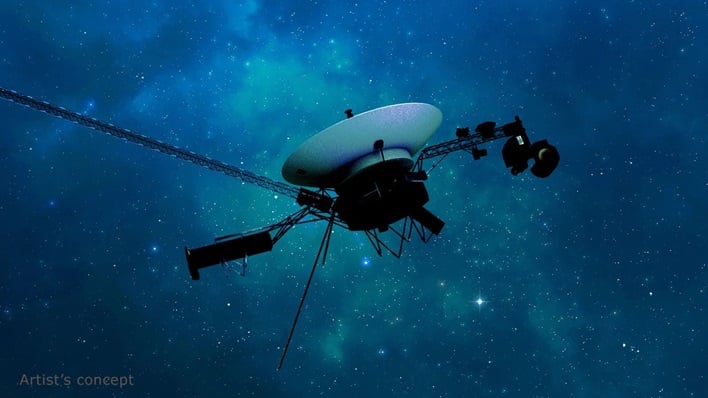NASA Hoping For A Miracle As It Scrambles To Fix A Major Voyager 1 Computer Bug

As of right now, the space agency can talk to the spacecraft, and Voyager 1 can hear what is being sent to it, but the process is painstakingly slow. When NASA first reported the problem, the space agency remarked that because of the vast distance Voyager 1 is currently located—over 15 billion miles (24 billion kilometers) from Earth—the engineering team must wait 45 hours to get a response from the spacecraft.
According to NASA, the flight data system collects data from the science instruments, along with engineering data about the health and status of the Voyager 1 spacecraft. The flight data system then combines all the information into a single data “package” to be sent back to Earth by the telemetry modulation unit in binary code. However, the system began repeating a pattern of ones and zeros as if it were “stuck.”
One of the biggest problems with trying to resolve the issue with Voyager 1 is that engineers must consult original, decades-old documents that were written by engineers who had not anticipated the issues NASA is currently experiencing. Because of this, NASA says it takes the team more time to understand how a new command will affect the spacecraft’s operations in order to not have unintended consequences.
"It would be the biggest miracle if we get it back. We certainly haven't given up," Suzanne Dodd, Voyager project manager at NASA's Jet Propulsion Laboratory, said in an interview with Arstechnica. "There are other things we can try. But this is, by far, the most serious since I’ve been project manager."
Voyager 1, and its twin Voyager 2, are the two longest-operating spacecraft in history, both launching in 1977. The two spacecraft are now outside the heliosphere, and have been providing new information abut the formation and state of our Sun and how it interacts with interstellar space, as well as providing information about how other stars interact with the interstellar medium.

